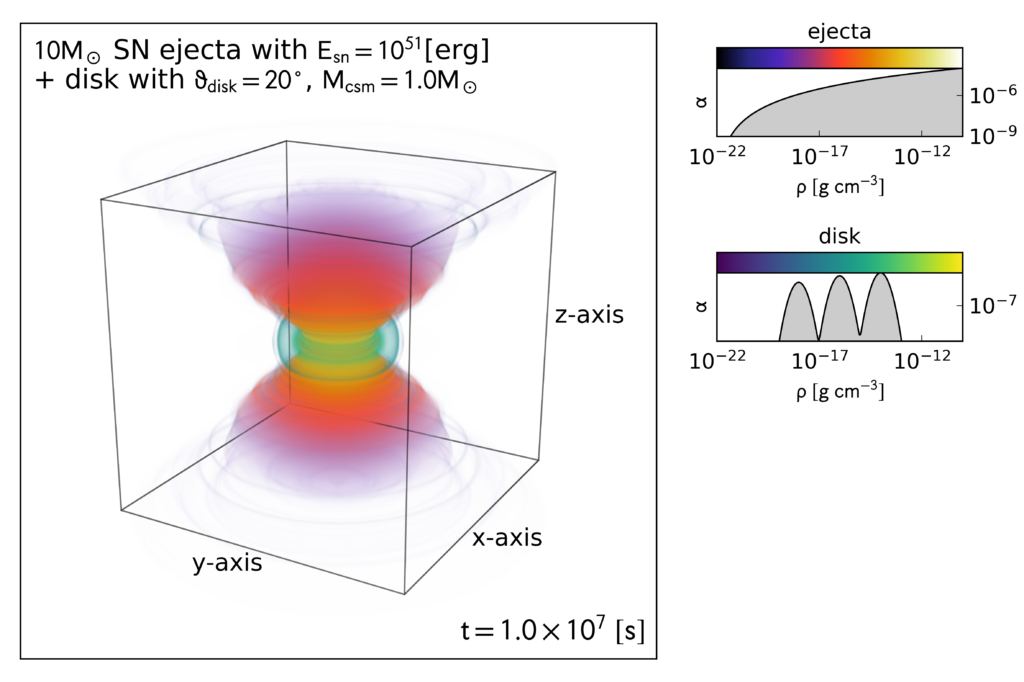Division of Science, NAOJ
Radiation-hydrodynamic simulations of supernova ejecta interacting with circumstellar media

Among final explosions of massive stars(core-collapse supernovae), some objects show the evidence of the interaction with gas surrounding exploding stars (circum-stellar media). They are classified into the type IIn or Ibn sub-classes, depending on the presence and absence of hydrogen lines in their spectra (type II supernovae are those with hydrogen spectral feature and type Ib supernovae are those with no hydrogen feature but with helium). Some type IIn supernovae are thought to be powered by the collision between the supernova ejecta and the circum-stellar medium, which sometimes makes them extremely bright (e.g., SN 2006gy). However, it is still unclear how such massive circum-stellar media could be produced in the final evolutionary stage of a massive star and distributed around the star. Some type IIn supernovae exhibit asymmetric spectral line features and polarization signature, suggesting that circum-stellar media are distributed in a non-spherical way. Therefore, investigating how supernovae interacting with massive circum-stellar media outshine and detailed comparisons between theoretical models and observations may shed light on the origin of massive circum-stellar media around exploding stars.
Dr. Akihiro Suzuki (NAOJ Fellow), Dr. Takashi Moriya, and Dr. Tomoya Takiwaki of Division of Science, NAOJ performed two-dimensional radiation-hydrodynamic simulations of supernova ejecta colliding with circum-stellar media to investigate how they look like. They found that their light curves are highly dependent on the viewing angle along which observers are seeing the object. This result may explain the diversity of light curves of supernovae powered by the collision with the surrounding gas. They will conduct additional researches on the spectral formation and polarization signatures to ultimately unveil the origin of the circum-stellar environment of exploding massive stars. This result has been published in The Astrophysical Journal.
2019/01/22
Reference:
Suzuki, A., Moriya, T. J., and Takiwaki, T., The Astrophysical Journal, 880, 150 [ADS] [doi]
Contact:
Akihiro Suzuki [personal website]

